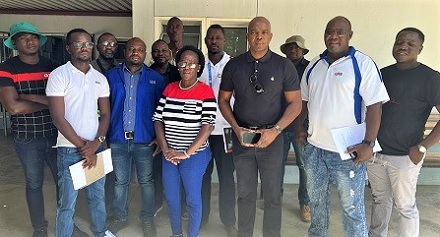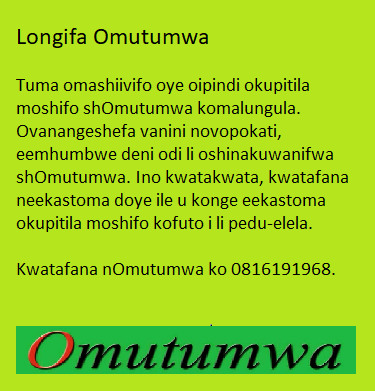According to a study conducted by the Namibian Agronomic Board, Namibia’s fruit production sector accounts for about 4% of local production (a mere 732 tons) compared to an estimated 20 282 tons imported from other countries to meet local demand.
This was pointed out by Mr Hanks Saisai who is Agribank’s technical advisor on crops and poultry.
Saisai said that most fruits consumed in Namibia such as apples, pears and bananas are seldom produced in Namibia.
“To this end, oranges and grapes are amongst the most supplied fruits from local producers. Fruit commodities predominantly exported from Namibia consist of grapes (about 28 483 tons) and mangoes (81 tons),” he said.
“Moreover, in recent years, blueberries are among the popular fruits exported to the EU market.
“To this end, growing fruits remains an untapped farming enterprise that may offer a variety of opportunities for many Namibians. For instance, establishing a nursery that specializes in the production of certified fruit trees, may offer a good niche market for fruit trees such as apples, guavas, bananas, oranges, mangoes, and lemons.
“If each fruit tree costs about N$40.00 for ungrafted seedlings on average and about N$120.00 for grafted seedlings and a farmer were to produces 200 ungrafted seedlings, an income of about N$8 000.00 can be generated per annum.
“Furthermore, if a farmer produces 200 grafted seedlings over a one-year period and sells them for N$120.00 per seedling, an income of N$24 000.00 can be generated.”
Another opportunity that can be exploited is the actual growing of fruit trees on a commercial basis to offer local markets with high-quality fruit trees.
Saisai pointed out that if a farmer embarks on the production of fruits such as oranges, guavas and lemons, the following business scenario can be expected: If a farmer were to prepare one hectare (1 ha) and plant orange trees to produce high quality fresh oranges that will be sold to formal markets, 667 orange fruit trees can be planted if the farmer implements recommended spacing of 5 metres between rows and 3 metres within rows.
The trees will take about 3 years before they start yielding fruits with each orange tree producing about 6 tons per ha. Once the trees reach peak production which is around years 8 to 15, the yield will increase to an estimated 20 tons (20 000 kg) per ha.
With average farm gate prices of N$25.00 per kg, a farmer can realize an annual revenue of about N$500 000.00 from the sales proceeds of oranges.
On the other hand, if a farmer were to embark on the production of guavas to serve formal and informal markets, about 118 trees can be grown by the farmer on 0.5 hectares if the farmer applies recommended spacing of 6.5 metres between rows and 6.5 metres within rows.
Each tree has the potential to produce about 75 kg and a total yield of 8 850 kg from the 0.5 ha plot is possible.
“Moreover, if the farmer sells the guavas for N$8.90 per kg, a total revenue of N$78 765.00 per annum is possible from the sales proceeds.”
Saisai stated that another most significant opportunity that fruit tree production offers farmers and communities is the fresh supply of oxygen all year round.
“Moreover, planting trees can contribute towards mitigating the detrimental effects of climate change. Farmers and all Namibians are therefore urged to support the local production of fruits to levels that surpass local demand to expand fruit exports to foreign markets thus contributing to the agriculture sector and the overall GDP of the country.”
In the photo: Fruits come from trees.








